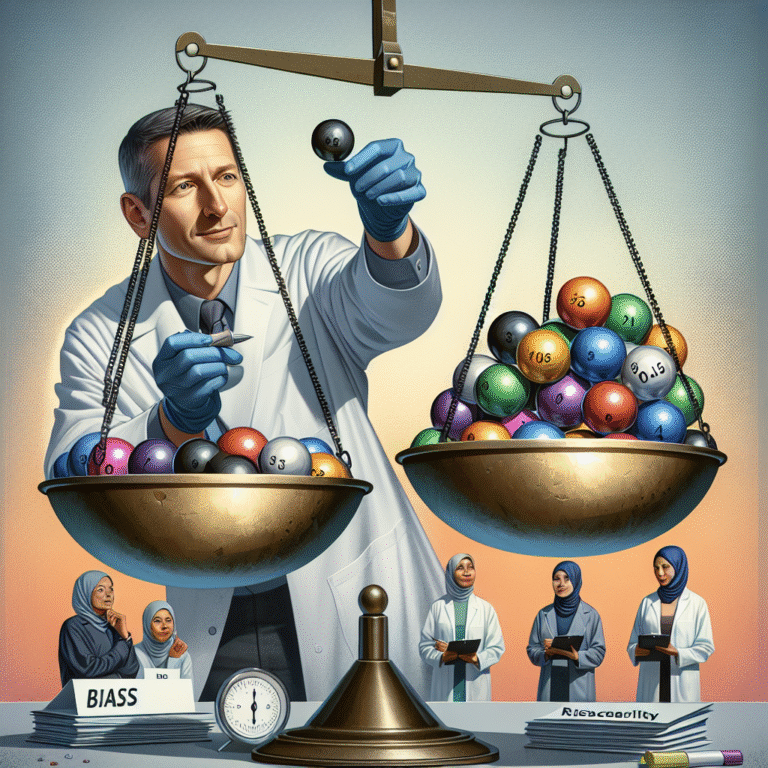
Introduction
In the age of big data, understanding the nuances of data analysis is crucial for success in any field. Whether you’re a researcher, business analyst, or a marketer, the ability to effectively analyze data can drive informed decision-making and predictive insights. Among the myriad components of data analysis, one variable reigns supreme: the dependent variable. This is more than just a technical term—the dependent variable is the key to analyzing your data effectively. Grasping its role can transform the way we interpret results and pave the way for more sophisticated analyses.
Understanding the Dependent Variable
To comprehend the significance of the dependent variable, we must first establish what it is. In research methodology, particularly in statistical analysis, the dependent variable is the outcome that researchers are trying to explain or predict. It is essentially ‘dependent’ on the independent variable(s), which are manipulated to observe effects. In essence, your dependent variable holds the key to understanding any changes in your analysis.
Key Characteristics of Dependent Variables
- Outcome Focused: Dependent variables are the outcomes of interest in research and analysis.
- Influenced by Independent Variables: Changes in dependent variables are observed in response to variations in independent variables.
- Measurable: They should be quantifiable to allow for precise statistical analysis.
Example: In a study examining the effect of study habits (independent variables) on test scores (the dependent variable), the test scores are what we measure to observe the outcome of altered study techniques.
Why the Dependent Variable is Crucial
1. Identifying Relationships
The dependent variable is essential in establishing relationships between various factors. By analyzing these relationships, researchers can draw meaningful conclusions and understand causal relationships in the data.
Case Study: A marketing firm analyzed the relationship between advertising spend (independent variable) and sales revenue (dependent variable). By tracking sales revenue as advertising spend fluctuated, they discovered that higher advertising led to greater revenue, allowing for more strategic future investments.
2. Tailoring Analysis Techniques
Different dependent variables necessitate different analytical approaches. Recognizing the nature of your dependent variable (categorical vs. continuous) helps in selecting the appropriate statistical tests.
Table 1: Types of Dependent Variables
| Type | Description | Common Statistical Tests |
|---|---|---|
| Continuous | Numeric and measurable | T-test, ANOVA, Regression |
| Categorical | Groups or categories | Chi-square, Logistic regression |
Understanding how to handle various types of dependent variables allows researchers to provide richer insights into the data.
3. Driving Decision Making
The dependent variable directly influences business strategies. Identifying how dependent variables react to independent variables can reveal insights invaluable for decision-making.
Statistical Insight: In one instance, a manufacturing company identified defective items (dependent variable) in relation to production speed (independent variable). By analyzing data, they enhanced their quality control procedures, reducing defects significantly, which subsequently led to increased profits.
How to Choose the Right Dependent Variable
Selecting the correct dependent variable is imperative for an effective analysis. Here’s how to choose wisely:
- Define Your Research Question: Understand what you are trying to discover or prove. Your dependent variable should align with this inquiry.
- Be Specific and Clear: Ensure definability—your dependent variable should be specific enough to allow for measurement.
- Consult Existing Literature: Many studies have already established relationships and variables. Reviewing existing research can guide your selection.
Best Practices for Analyzing Dependent Variables
1. Utilize Visualizations
Visual representations can clarify complex data interactions. Charts, graphs, and visual aids can make it easier to convey results involving dependent variables.
Example:
Using scatter plots to visualize the relationship between study time (independent) and grades (dependent) helps identify trends that can be overlooked in raw data.
2. Consider Interactions
Understanding how multiple independent variables affect a dependent variable is critical. Incorporate interaction terms in your analysis to capture this complexity.
3. Ongoing Validation
After selecting and analyzing your dependent variable, continuously validate your findings with new data. This iterative feedback loop ensures that your insights remain relevant and applicable.
Challenges in Analyzing Dependent Variables
1. Misinterpretation of Data
One of the most common pitfalls is confusing correlation with causation. Just because two variables (dependent and independent) move together does not mean one causes the other.
2. Overfitting
When models are built to fit the training data too closely, they may fail to generalize to new data. Be cautious of overfitting when utilizing complex models to predict dependent variables.
3. Multicollinearity
When independent variables are highly correlated, it can obscure the effects on the dependent variable. Be mindful of this issue by utilizing techniques such as VIF (Variance Inflation Factor) to detect potential problems.
Conclusion
Understanding the dependent variable is indispensable for anyone serious about data analysis. As we’ve explored, it acts as the linchpin for understanding relationships, guiding analytical techniques, and driving organizational decision-making. With the correct application and ongoing validation, you can unlock profound insights that can transform your analyses.
As you engage with your data, remember this mantra: The dependent variable is the key to analyzing your data effectively. Embrace it, understand it, and use it to guide you towards meaningful conclusions in your research or business ventures.
FAQs
1. What is a dependent variable in simple terms?
A dependent variable is an outcome that researchers are trying to explain or predict. It is influenced by independent variables.
2. How do dependent and independent variables interact?
Independent variables are manipulated to see how they affect the dependent variable. Changes in independent variables lead to changes in the dependent outcomes.
3. Can a study have multiple dependent variables?
Yes, while many studies focus on a single dependent variable, others may analyze multiple outcomes, which can provide a broader view of the data.
4. What’s the difference between continuous and categorical dependent variables?
Continuous dependent variables are numeric and measurable, while categorical variables represent groups or categories.
5. How do you ensure you are measuring the right dependent variable?
Clearly define your research question, and ensure that your chosen dependent variable aligns specifically with what you are trying to investigate.
Embrace the power of the dependent variable: it is your key to navigating the vast landscape of data analysis with confidence and clarity.

















